A large part of training performance horses focuses on ensuring your horse’s entire body, from his nose to his tail, is soft and supple. You should be able to move any part of his body off a feather-light touch. If you can’t shape your horse for a maneuver, there’s no hope that he’ll be able to perform it well.
An exercise I use frequently to get my horses soft is Backing Circles. While the concept is simple, it’s a fairly difficult exercise for a horse to master. For that reason, I break the exercise up into two separate parts. Initially, I teach the horse to back up in a circle with his head tipped in the opposite of the direction he’s backing in because it makes it easier for him. A horse’s hindquarters naturally go in the opposite of the direction his head is tipped. So if his head is tipped to the right, it’s much easier for him to back in a circle to the left.
Once a horse is backing in a circle well, with his head tipped in the opposite direction from the one his hindquarters are moving in, then I ask him to back the circle with his head tipped in the same direction that his hindquarters are traveling in. It’s very important not to move on to this stage until the horse is easily doing the first stage well.
Not only is backing circles a great softening and suppling exercise, but it also helps set a horse up for executing spins and rollbacks better. When a lot of horses do a spin or rollback, they put their inside front foot too far forward and then have a hard time crossing over correctly. Backing circles gets the horse’s inside front foot to step back and over so that when he goes into a spin or rollback, his inside front foot is always stepping in the correct position.
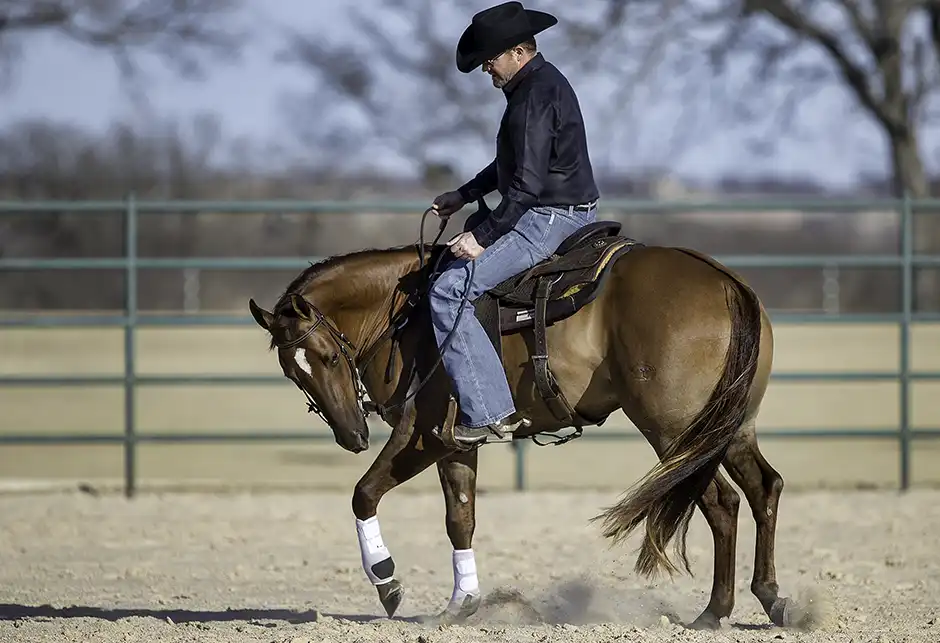
1. Walk your horse forward while doing the Intermediate exercise Bending With Vertical. You want your horse collected, soft in your hands and bending his ribcage around your inside leg.
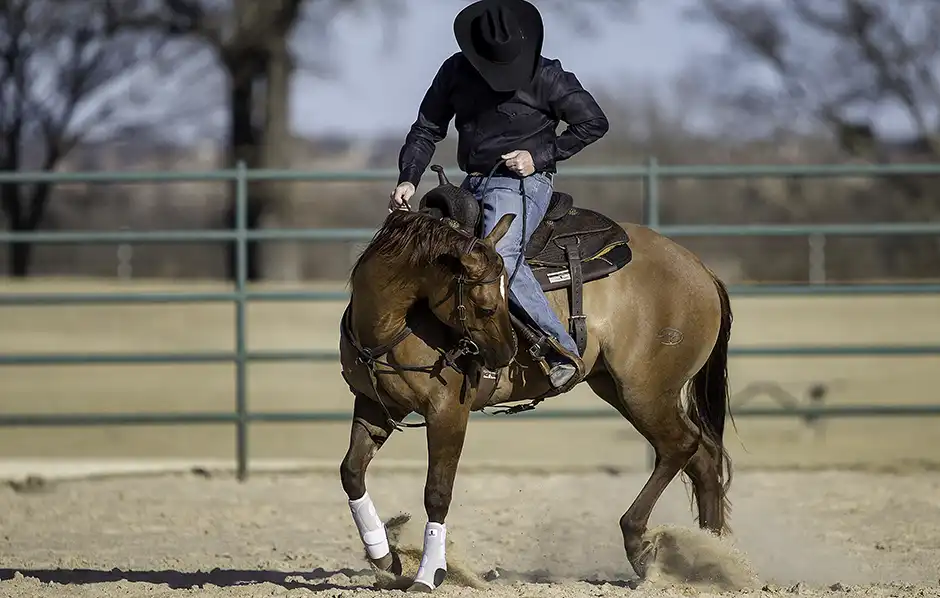
2. When the horse is moving forward and remaining soft in the bridle, yield his hindquarters 360 degrees. Yielding the hindquarters is going to create energy in the horse’s feet so that when you ask him to back up, he’ll already have momentum moving in the same direction you ask him to back in the circle.
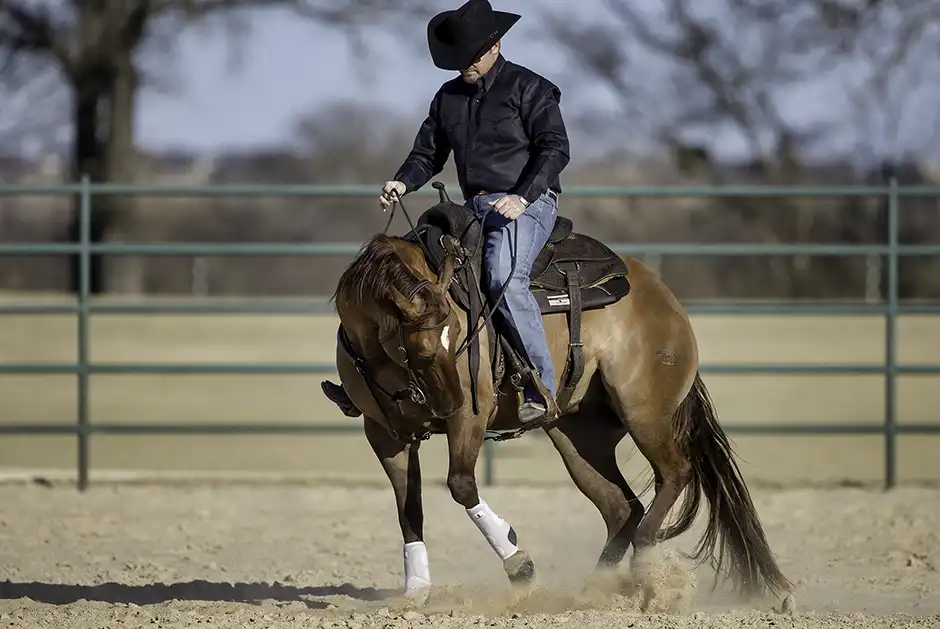
3. When the horse’s hindquarters are loosened up, redirect his energy backwards. Do not let his feet stop moving. Using your inside rein, straighten his head out slightly so that it’s bent to about a 45-degree angle. Pick up on the outside rein and bring both reins back toward your inside hip. In this picture, I’m backing Goose in a circle to the right. I use my left rein to bend his head to about a 45-degree angle, and I pick up on my right rein and bring it slightly back to my hip to cue him to go backwards.
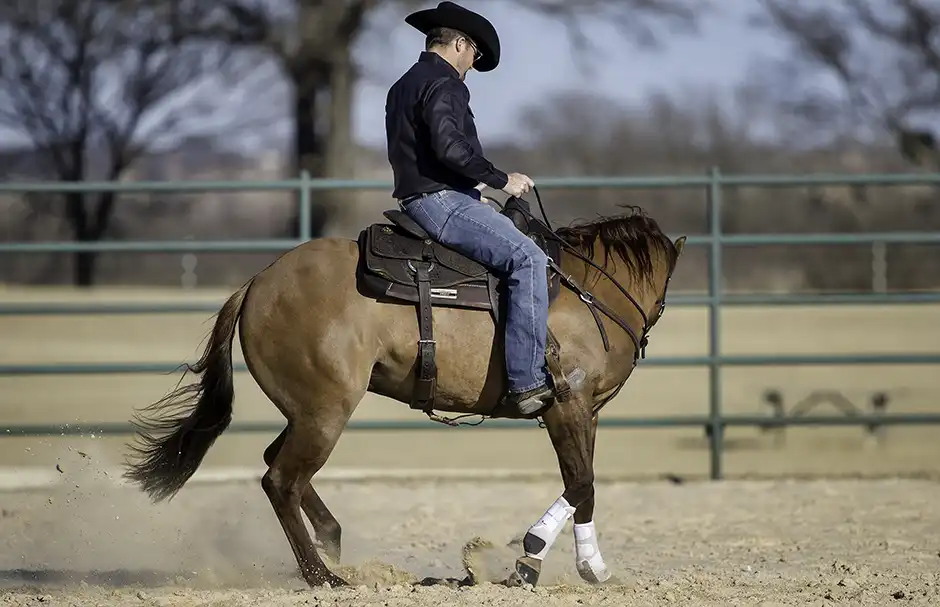
4. At the same time, place your outside leg up near the girth and keep your inside leg back near the horse’s flank and press gently. Your outside leg pushes the horse’s shoulders around and your inside leg pushes his hindquarters into the circle.
Think of it like this: Your hands ask the horse to back up, and your legs give him a reason to move his feet.
Here, I use my right leg to push Goose’s shoulders around the circle and my left leg to guide his hindquarters into the circle.
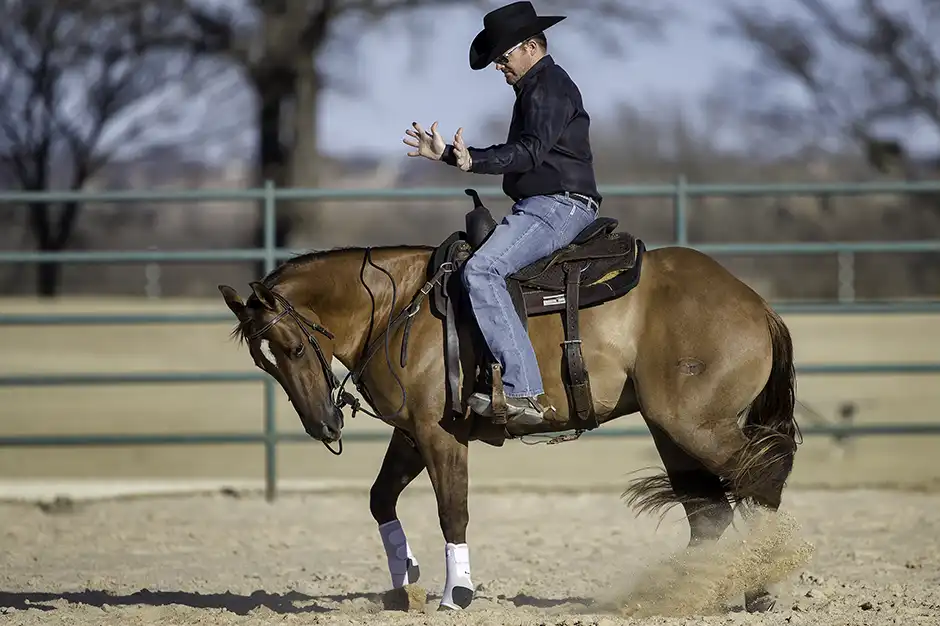
5. As soon as the horse takes a couple of steps backwards with energy in his feet while being soft in the bridle, release the pressure and let him come to a stop. Just look for a step or two initially. Establish a starting point, and then build from there.

6. Gradually build on the number of steps you ask the horse to back in a circle until he can back a full circle. Be conscious to release the pressure only when he’s remaining soft in your hands and has energy in his feet. This may be something you chip away at a little in every training session. This exercise is not intended to be done fast. You’re not looking for the horse to hustle backwards in the circle; you want him to have a nice cadence to his feet.
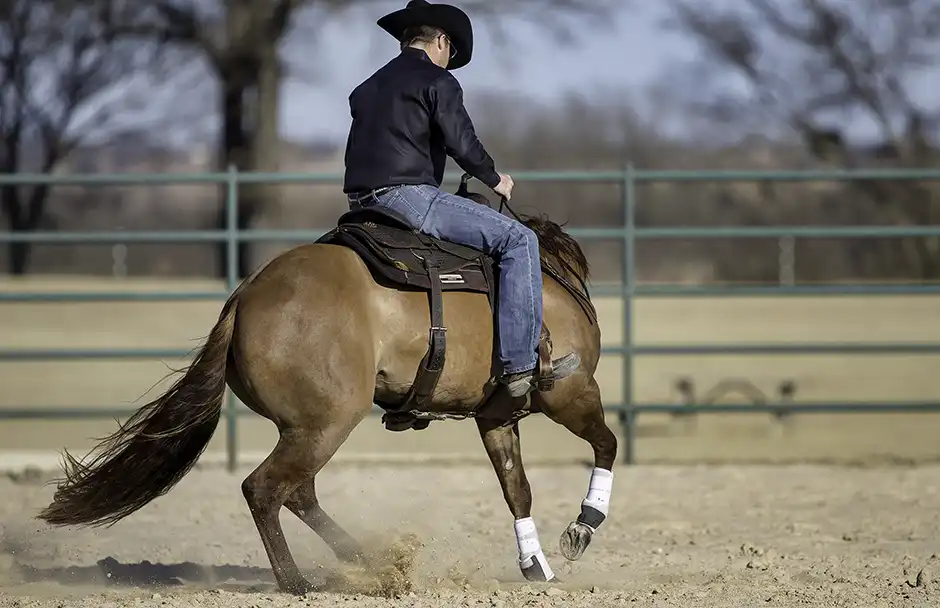
7. When the horse can back a full circle, bring him out of the backup by doing a spin. With his head still bent to the side, take your inside leg off and continue pressing with your outside leg up by the girth to move his front around his rear. Your leg will drive the horse through the turn.
Here, I took my left leg off Goose and I’m using my right leg to push his front end around. I left my hands in the same position that they were in when I was asking him to back the circle.
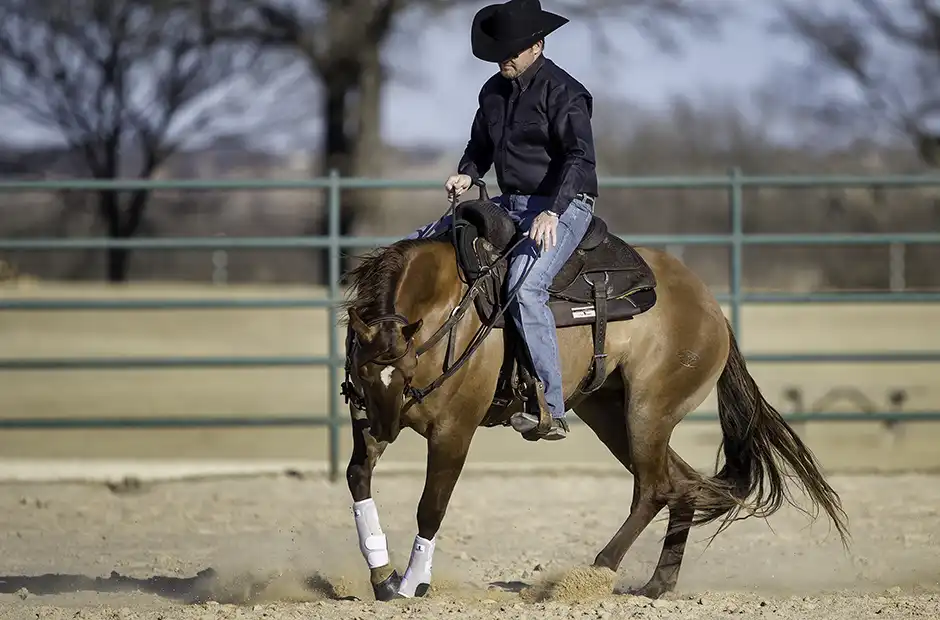
8. Taking the horse out of the circle into a spin reinforces to him to get back on his hindquarters and to move his shoulders over. Ask the horse to spin a complete circle.
You can also ask the horse to do a rollback. You’ll cue him just the same, but instead of asking him to move his front end 360 degrees around his hind end, you’ll just look for him to move his front end over.
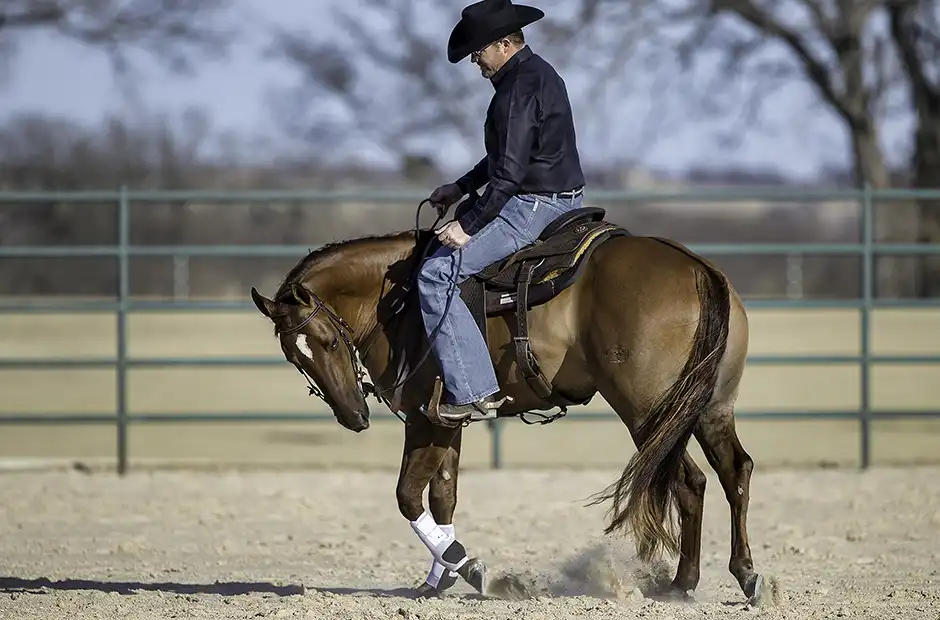
9. After taking the horse in a 360-degree spin, go straight back to bending him around in a circle with vertical flexion. This reminds the horse to stay soft. You want your horse to be like a big snake on valium—you should be able to shape his body off a feather-light touch.
Clinton is riding Goose (aka Evil Canivile), a gelding by Hollywoodstinseltown out of Nic N Smart, in this training article. Learn more about the horses and bloodlines that make up Clinton’s performance horse program by visiting clintonandersonperformancehorses.com.
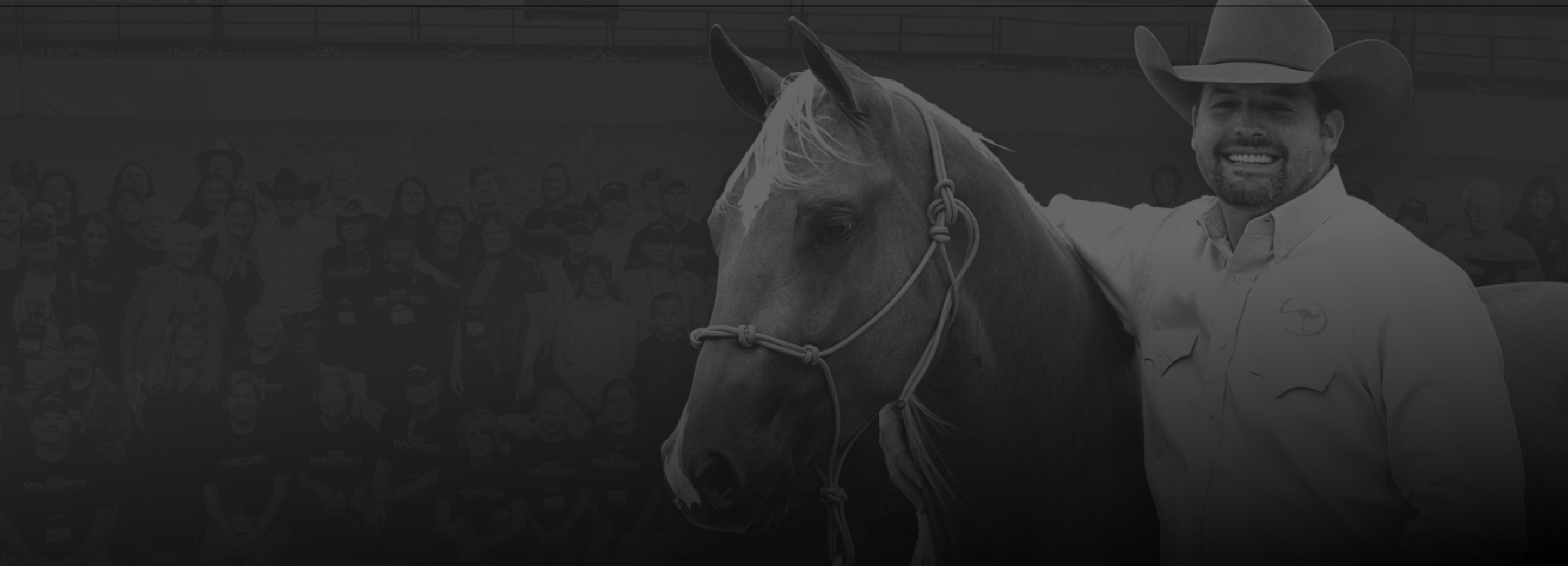
Master Your horsemanship Skills
Like these tips? Join the No Worries Club and hone your skills with thousands of hours of Clinton’s easy, step-by-step method horse training videos.



